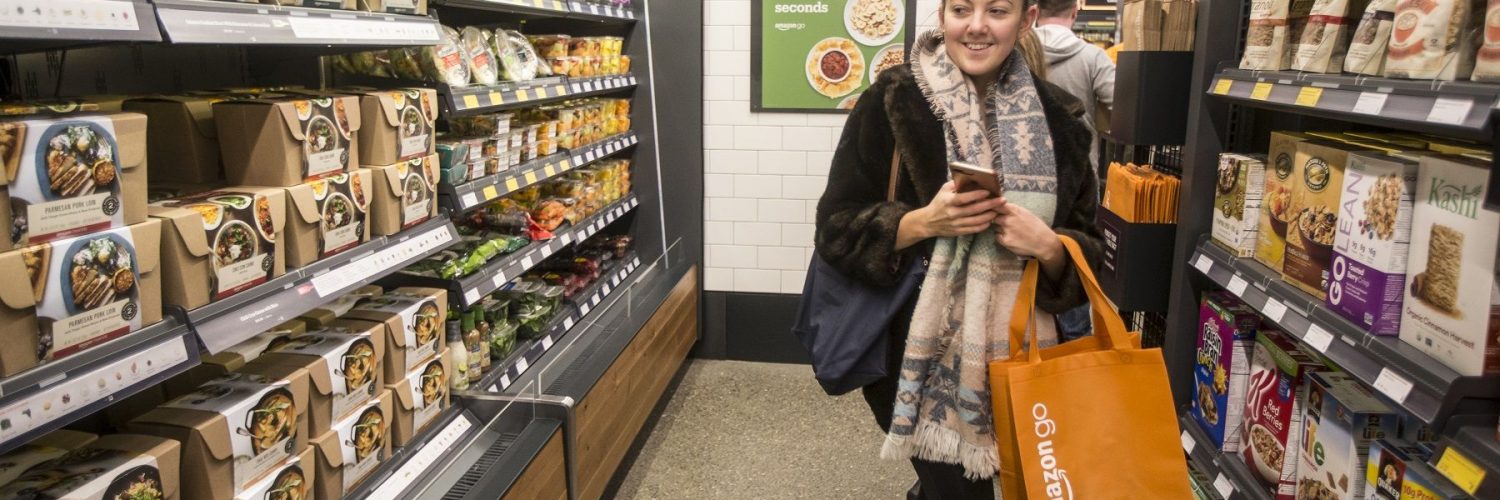Still, cashless is catching on. A second Amazon Go location in the Financial District, a few blocks west, opened this week. Walmart and Tesco are exploring similar cashless stores. The popular fast-casual restaurant Sweetgreen, the men’s retailer Bonobos, and the Drybar hair salon have all sworn off paper bills, advising employees to simply turn people away if they can’t pay digitally. Visa just awarded 50 small businesses, almost all of them fast-casual food spots, $10,000 each for winning its “cashless challenge.”
SIDNEY FUSSELL
The Atlantic
DEC 21, 2018

STEPHEN BRASHEAR / GETTY
Who Wins When Cash Is No Longer King?
It won’t be the poor.
Of the most popular coffee shops in San Francisco’s Financial District, only one is manned by a robot. Every morning, in a glass-and-wood booth on the corner of One Bush Street, customers queue around a whirring hydraulic arm, waiting for it to serve them cappuccino. It’s an odd sight. Cafe X has three San Francisco locations, and all are cashless and fully automated, with orders taken via app.
The one I pass on the way to work each morning is mere steps away from Amazon’s cashless Go store, where human cashiers and baggers have disappeared, and juice and milk are dispensed by wanding your phone over a sensor. Human attendants hover in the lobby to aid shoppers, mostly newcomers confused by the entire cashless scheme. And Amazon does have human employees who prep food and stock items.
Replacing checkout lanes with sensors and cash registers with swiveling iPads (frictionless shopping is the term of art here) makes for a novel shopping experience, one that Amazon hopes will help it gather shopper data to increase profits. Shoppers pay via the bank account attached to their Amazon profile, and each purchase is recorded and analyzed for insights into their behaviors and preferences. A sophisticated camera system—using the same technology that steers self-driving cars—monitors shoppers’ movements within the store. Even what they don’t do is recorded: For example, customers who pick up a carton of milk and then set it aside for a less expensive brand could have coupons sent to them.
The one I pass on the way to work each morning is mere steps away from Amazon’s cashless Go store, where human cashiers and baggers have disappeared, and juice and milk are dispensed by wanding your phone over a sensor. Human attendants hover in the lobby to aid shoppers, mostly newcomers confused by the entire cashless scheme. And Amazon does have human employees who prep food and stock items.
Replacing checkout lanes with sensors and cash registers with swiveling iPads (frictionless shopping is the term of art here) makes for a novel shopping experience, one that Amazon hopes will help it gather shopper data to increase profits. Shoppers pay via the bank account attached to their Amazon profile, and each purchase is recorded and analyzed for insights into their behaviors and preferences. A sophisticated camera system—using the same technology that steers self-driving cars—monitors shoppers’ movements within the store. Even what they don’t do is recorded: For example, customers who pick up a carton of milk and then set it aside for a less expensive brand could have coupons sent to them.
It will be interesting to see the how a cashless society helps or hinders people with even fewer resources. Consider the U.K.’s Greater Change pilot in August, supported by Oxford University’s Said Business School. The purpose of the pilot was to allow for cashless donations to the homeless. The charity offered lanyards to homeless people, each with an attached barcode. Simply scanning your phone over the person’s QR code sent a small amount of money to them.
Programs like these may result in a bump in donors, but there could also be stigma associated with redeeming the lanyards. If history is any indication, the effects of these technological changes on society’s most vulnerable people won’t be considered until they’ve become a reality.











